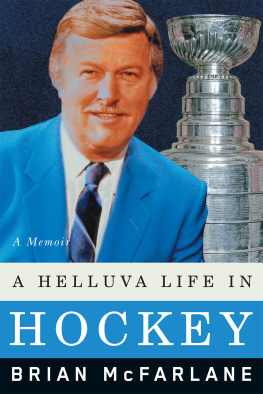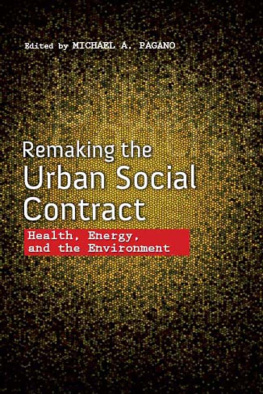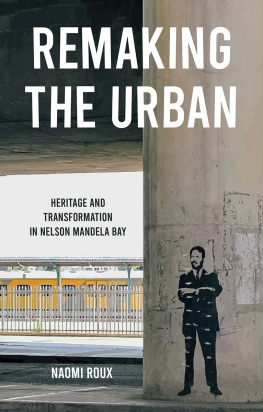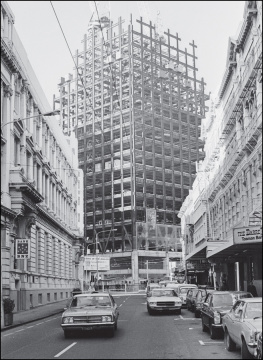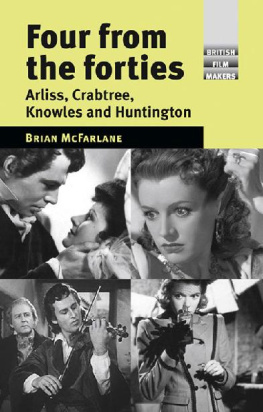University of California Press
Oakland, California
2021 by Colin McFarlane
Library of Congress Cataloging-in-Publication Data
Names: McFarlane, Colin, 1979 author.
Title: Fragments of the city : making and remaking urban worlds / Colin McFarlane.
Description: Oakland, California : University of California Press, [2021] | Includes bibliographical references and index.
Identifiers: LCCN 2021012121 | ISBN 9780520382237 (hardcover) | ISBN 9780520382244 (paperback) | ISBN 9780520382251 (ebook)
Subjects: LCSH: Cities and towns. | Cities and towns in literature.
Classification: LCC HT 151 . M 388 2021 | DDC 307.76dc23
LC record available at https://lccn.loc.gov/2021012121
Manufactured in the United States of America
30 29 28 27 26 25 24 23 22 21
10 9 8 7 6 5 4 3 2 1
Prologue
Imagine spacious landscaped highways .... They unite and separateseparate and unite the series of diversified units, the farm units, the factory units, the roadside markets, the garden schools, the dwelling places (each on its acre of individual adorned cultivated ground), the places of pleasure and leisure. All of these units arranged and integrated so that each citizen of the future will have all forms of production, distribution, self-improvement, enjoyment, within a radius of a hundred and fifty miles of his home now easily speedily available by means of his car or plane. This integral whole composes the great city that I see embracing all of this countrythe Broadacre City of tomorrow.
F.L. Wright, 1932
The integral whole, separated but united. So wrote Frank Lloyd Wright, a figure who was hugely influential in twentieth-century debates on architecture, planning, and urban development, in 1932. For all that Wrights vision was a fundamentally American one, caught up as it was with the classic image of suburban life, it speaks to a wider desire for the whole that has gripped the history of thinking about cities. In this view, cities are closely integrated spaces of flow and movement, blending urban and rural components with their functions neatly organized and connected. They are portrayed as internally bound up with themselves; in a material and even social sense: whole.
Jump forward almost a century from Wrights comment to today and you are more likely to read about the 15-minute compact walkable city than a 150-mile radial urbanism, but the ambition for the integrated whole remains. A recent piece in The Guardian newspaper, for instance, wondered whether it might be possible to reach peak city. Using the The aspiration for completion is closely connected to a long-standing utopian ideal of the city as an integrated whole, meeting needs and wants.
The idea of the integrated, connected city functioning as a whole is central to the larger project of modernity. As Patrick Joyce has shown, the techniques and technologies of modernity had at their center objectives of consolidation, objectification, and abstraction that gathered so many fragments of things, space, and knowledge into efforts to cohere, govern, and control. This includes forms of knowledge and governing that emerged largely in the nineteenth century and which underpinned liberalism in both metropoles and colonial cities alikefrom maps and statistics to public healthalongside the development of municipal organization and bureaucracy, and the building of circulatory infrastructures and services from energy, water, and sanitation to neighborhood policing.
What, though, of the fragments, the shards, the scraps and ruins? What of the bits and pieces, the broken-off and discarded, the lying-around-and-who-knows-what-its-for? According to the creed of wholism, they are the debris to be swept aside or tidied away, the troublesome sites of removal in the steps to the unitary city. Consider, in contrast, South African artist Sue Williamson, and her 1993 work on the infamous District Six redevelopment in Cape Town. District Six had been declared a slum that should be transformed into a whites-only area by the apartheid government in the 1960s, resulting in the forced removal of coloured residents to the Cape Flats from the mid-1970s. Here, writer Ivan Vladislavic reflects on a visit to Williamsons exhibition with his partner, Liz:
Mementoes of District Six is a cabin made of resin blocks. Enclosed in each block is an object or fragment that the artist Sue Williamson collected among the ruins of District Six after the removals: a shard of pottery, a scrap of wallpaper, a hairclip, a dolls shoe. It made me cry like a baby, says Liz. You? Never. Really, Im no pushover, but it was just so moving, standing there like a kid in a Wendy house surrounded by these relics, worthless things made to seem precious, glowing like candles. As if each trinket and scrap had been a treasure to someone. We talk about trifles and their meaning.
Mementoes of District Six contains everyday things that appear at once worthless or trifles and, at the same time, demand that we contemplate the lives and histories they were caught up with. Williamsons work is powerful not just because of what is there but because of what is not there. The people, the thick constellations of relations going on all around the ordinary objects of urban life, and how the not there is a product of a brutal geography of violence. The fragmentation of the city begets fragments: fragments of things, lives, and spaces. These are so often the costs of the integral whole and the fantasy of the complete city: the dominance of particular groups and aesthetics over others, and the machinations of urban value that define capitalist transformation. The utopian dream of the integrated, complete city leaves little room for the fragments.
We might ask, as Ananya Roy asks: Whose urban experience is stable and coherent? Who is able to see the city as a unified whole? By contrast, for whom is the city a geography of shards and fragments? Whole and fragmented are not just different kinds of claims about the citythey point to radically distinct ways of experiencing and seeing the urban condition, even though they are often brought together in different ways. On the economic margins of the urban world, which are growing at faster rates than cities more generally, the rise in urban living typically does not lead to the integrated provision of amenities but to an urbanism of fragments. This book is about the fragments. The fragment is a form and idea that has always accompanied research and writing on citiesand we will encounter many instances of this across the bookyet there have rarely been efforts to examine what different manifestations of the fragment might bring to how we understand, express, and contest the urban condition. In exploring the fragment, the wholes are always there too, and not always as forms of violence, destruction, or exclusion. Sometimes the whole is what people are reaching and hoping for, and the fragments are what they are trying to escape. And fragments and wholes can be made into more than they initially seem to be.
In setting out this exploration of urban fragments, I am aware of how my own privilege has enabled not only a relatively stable and coherent experience of urbanism but also an opportunity for mobility and access denied to many researchers as well as most urbanites living on the economic margins. The way in which I have learned and come to see the urban world, for all its blindspots, provisionalities, and situatedness, is in part a product of the small and large privileges that are embedded within and accrue to a white man in a well-resourced university. I did not grow up in a wealthy or privileged contextwe were a relatively poor family on the economic and spatial margins of Glasgowbut the opportunities Ive had to travel across many sites in the urban world, as well as the geography of access and responsiveness that opens doors and informs relationships in different places, has shaped this book, and they are often denied to many researchers, especially in the global South. In addition, I have been privileged to have the help and support of many people in and beyond cities from Berlin, Kampala, and Cape Town to Mumbai and New York, whether fellow academics or residents or activists or people in municipalities and civil society groups.





